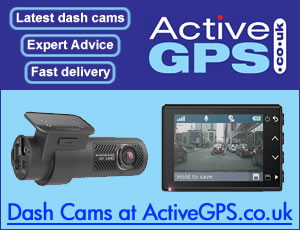Home > Speed Camera Types > Gatso Speed Camera
Gatso Speed Cameras Explained
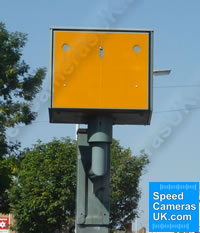 Since the introduction of speed cameras on Britain's roads in 1992, it's the Gatsometer BV speed camera which has become the most commonly used camera on the UK's roads. Though some counties such as Northamptonshire and Hampshire favour Truvelo cameras instead. Plus, Norfolk have recently changed a number of their old Gatso cameras for the new Truvelo D-Cam.
Since the introduction of speed cameras on Britain's roads in 1992, it's the Gatsometer BV speed camera which has become the most commonly used camera on the UK's roads. Though some counties such as Northamptonshire and Hampshire favour Truvelo cameras instead. Plus, Norfolk have recently changed a number of their old Gatso cameras for the new Truvelo D-Cam.
Back in 1992 when Gatsos and other speed cameras were first introduced they were all painted grey, then a change in the law in 2001 saw all speed or "safety" cameras change to be painted bright yellow to ensure visibility at the roadside.
New Digital Gatso Speed Camera
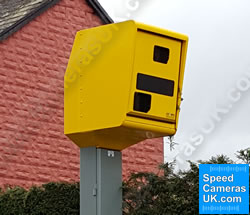 New digital Gatso speed cameras were introduced onto the UK's roads in 2007. These new Gatso cameras are considerable larger than original Gatsometer's and are now completely digital, eliminating the need for film to be retrieved by the Police/camera operator. This means the new digital Gatsometer will no longer run out of film so they will always be active.
New digital Gatso speed cameras were introduced onto the UK's roads in 2007. These new Gatso cameras are considerable larger than original Gatsometer's and are now completely digital, eliminating the need for film to be retrieved by the Police/camera operator. This means the new digital Gatsometer will no longer run out of film so they will always be active.
This new Gatso has also been designed to "fit and forget." It is described like this because it does not require the speed camera to be lowered for maintenance. These Gatso speed cameras are popular across London and are increasingly replacing old 'wet film' Gatsos across the UK.
Like the original Gatso, the new digital Gatso is rear-facing and uses radar technology, so if you are using a radar detector you will detect these speed cameras. You will also be alerted to these Gatsos using a GPS speed camera detector.
How do Gatso speed cameras work?
 Gatso speed cameras use radar technology to measure how fast a vehicle is travelling and to trigger the camera into action. If a motorist is driving above the road speed limit then two photos are then taken in quick succession. The Gatso uses a powerful flash to show the rear of the vehicle, its registration plate, and white painted calibration lines on the roads surface.
Gatso speed cameras use radar technology to measure how fast a vehicle is travelling and to trigger the camera into action. If a motorist is driving above the road speed limit then two photos are then taken in quick succession. The Gatso uses a powerful flash to show the rear of the vehicle, its registration plate, and white painted calibration lines on the roads surface.
Gatso speed cameras are always rear facing. The reason for this is that the speed cameras 'flash' will not blind oncoming motorists. However, this also means that the speed camera may not be visible until the last second (as pictured right - Gatso sited behind road traffic sign).
It is a legal requirement to have a secondary measurement for speed. This is why at every Gatso speed camera location there are white lines painted on the road. The distance between each line represents between 5mph so there can be no dispute over how fast you were driving. If there is any dispute over whether the radar technology captured the correct speed of the vehicle that was speeding the white lines are there as a secondary measurement.
Gatso can differentiate between different speed limits for different vehicles. For example cars, caravans and HGV's have different speed limits and the camera will measure the vehicles length and impose the correct speed limit for each vehicle.
The fixed Gatso uses a reel of film to record photos to. The film can soon run out in busy areas.
Do you have a question about Gatso speed cameras? You can read UK motorist's Gatso questions and answers and you can also ask your own unanswered question via our online form. Alternatively, read UK drivers Gatso camera comments.
Points and Penalties
The absolute minimum penalty for being caught speeding on the UK's roads increased 66.7% in July 2013 from £60 to £100 fine. A minimum of 3 penalty points will also be added to your driving licence.
However, depending on the road speed limit and your actual recorded speed in the speeding offence a court summons may be generated in place of the Notice of Intended Prosecution (NIP) through the post with the code SP10, SP20, SP30, SP40 or SP50. Read more about speeding fines.
Caught on film by a Gatso speed camera
Pictured below a motorist is caught and photographed speeding by a Gatso camera. The road speed limit for the dual carriageway is 70mph. The driver is captured driving at 80mph.

The first (top) image (below) depicts the moment the Gatso's radar technology is triggered into action by the speeding vehicle. Radar technology is the primary calculation method for determining the speed of the vehicle (in this case 80mph).
Milliseconds later a second photograph is taken (second/bottom image) by the Gatso speed camera. This second photo is used by police/speed camera operators as a secondary confirmation of the target vehicles speed. The police will look how far the photographed vehicle has travelled between the two photos by viewing the number of white lines the vehicle has crossed/reached.
Had another vehicle been in lane one of the dual carriageway and driving at say 60mph, this secondary measurement would have determined who was and wasn't speeding.
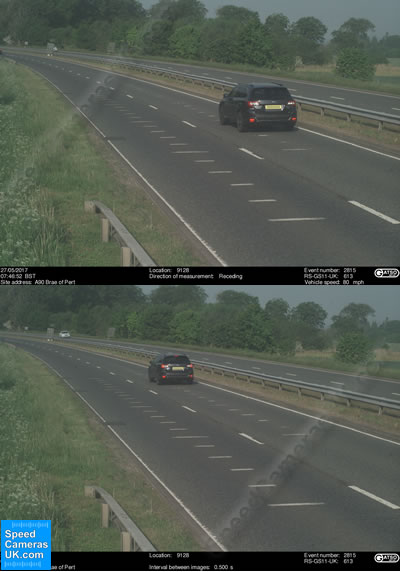
Video of Gatso Speed Camera
Can Gatsos catch you speeding on the opposite side of the road?
The Gatso meter safety camera is a rear facing camera and as such can only succesfully obtain a vehicles speed when driving past the Gatso. In other words if a Gatso speed camera is on the opposite side of the road and is pointing towards you it cannot record or catch you speeding. However be sure you're driving towards a Gatso and not the forward facing Truvelo camera as these are designed to work as a motorist drives towards them! It's also worth noting that Gatso's which are installation on a central reservation of traffic island can be turned periodically to target motorists traveling in either direction.
Where are Gatsos used?
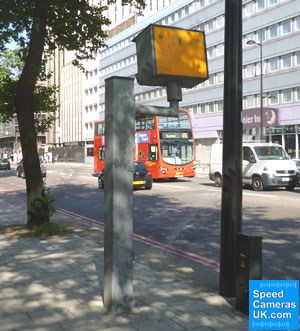 Gatso speed cameras are mainly in the form of a permanently installed unit. Gatso safety cameras can be installed to poles and existing street furniture. Gatso can also measure the length of vehicles for which there are different speed limits. Each Gatso speed camera costs approximately £20,000 to install. However they can cost as much as £40,000 if they are located in a rural location, as the system requires a 240v power supply.
Gatso speed cameras are mainly in the form of a permanently installed unit. Gatso safety cameras can be installed to poles and existing street furniture. Gatso can also measure the length of vehicles for which there are different speed limits. Each Gatso speed camera costs approximately £20,000 to install. However they can cost as much as £40,000 if they are located in a rural location, as the system requires a 240v power supply.
These include fixed installations at the side of the road, mobile speed camera vehicles (both parked and moving) and overhead gantries on motorways such as the M25.
Gatso can be used in a vehicle too. Speed measurement can be monitored in both directions of travel from a parked or moving vehicle.
Gatso speed cameras are often used in roadwork's. These speed cameras work on a integrated battery which can last up to a week. Gatso can also be used on a tripod as a mini gatso. These systems work on a lightweight battery offering 8 hours of continuous operation.
It used to be the case that speed cameras had to be located in accident black spots. However, since 2007 these requirements have been removed. The Gatsos must be visible and clearly signposted though. A motorist asked whether a speed camera can be installed on a road near him, read his question and our reply here.
Pictured below new digital Gatsometer speed camera. The camera pictured below replaced an old (orignal) Gatso camera on Longden Road, Shrewsbury, Shropshire.
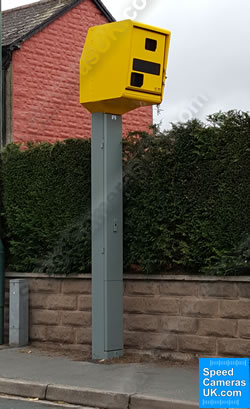
Gatso locations
What is your view and experiences with GATSO speed cameras in the UK? Tell us and read more Gatso comments. Alternatively, if you have a question relating to Gatso fixed speed cameras, please see our Gatso Q&A page.
Want to know where the UK's Gatso speed cameras are as you drive? Here at SpeedCamerasUK.com we have a UK database of speed camera locations. This database also includes SpeedCurb, Truvelo, New Truvelo, SPECS, Peek, Traffic Light speed cameras and more. Read more about the speed camera types.
Speed camera alerts as you drive
Last updated: 15th September 2025

